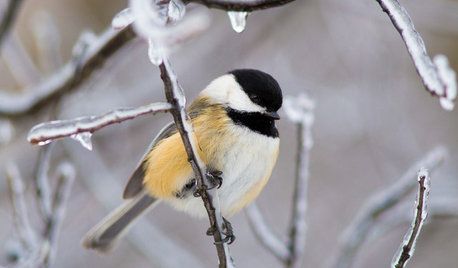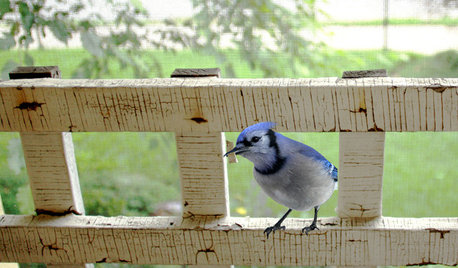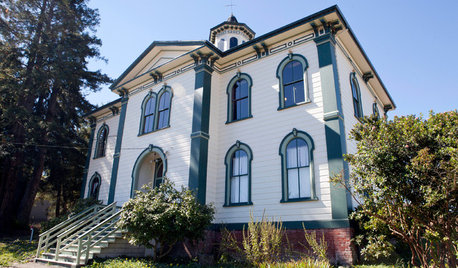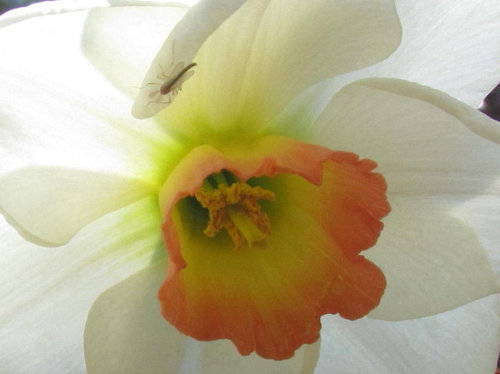Birds and other mobile features in the garden 2014 #5
claireplymouth z6b coastal MA
9 years ago
Related Stories

GARDENING GUIDESBackyard Birds: Northern Cardinals in the Snow, and Other Red Birds
Brilliant crimson feathers make these friends stand out in a crowd
Full Story
GARDENING FOR BIRDSWild Birds Transform a Woman’s Garden and Life
How Sharon Sorenson created a wildlife haven and became the Bird Lady of Southern Indiana
Full Story
GARDENING GUIDESBackyard Birds: Invite Entertaining Hummingbirds Into Your Garden
Hummingbirds — unique to the Americas — zip through open landscapes seasonally or year-round. Here’s how to attract them
Full Story
GARDENING FOR BUTTERFLIESBring on the Birds: Natural Habitat Ideas for Gardens of All Sizes
Provide nesting, watering and perching spots inspired by the Costa Rican jungle and watch the birds flock on over
Full Story
GARDENING FOR BIRDSBackyard Birds: Marvel at Chickadees This Winter
These North American natives flock to bird feeders and entertain with their complex birdcalls
Full Story
GARDENING FOR BUTTERFLIESGreat Design Plant: Red Bird-of-Paradise Soars With Color
Fiery bursts of red-orange flowers bring hot summer gardens to life, while this shrub's drought tolerance keeps the living easy
Full Story
GARDENING GUIDES8 Native Shrubs for Year-Round Bird Feeding
It’s not just about berries. These plants provide insects for birds and seasonal interest for gardeners
Full Story
MODERN ARCHITECTUREThe Gable Goes Mobile, Micro and Mod
Three ingenious tiny homes feature the familiar peaked roof in unexpected ways
Full Story
GARDENING FOR BIRDSBackyard Birds: Meet Some Clever and Curious Jays
Boisterous jays provide plenty of backyard bird-watching in winter. Here’s how to identify all the varieties and welcome them into your yard
Full Story
HISTORIC HOMESHouzz Tour: Meet the Schoolhouse Saved By ‘The Birds’
Once featured in Hitchcock’s feathery film, this schoolhouse has stood the test of time
Full StoryMore Discussions








corunum z6 CT
claireplymouth z6b coastal MAOriginal Author
Related Professionals
Arlington Landscape Architects & Landscape Designers · Cedar Hill Landscape Contractors · Cicero Landscape Contractors · Clearlake Landscape Contractors · Englewood Landscape Contractors · Estelle Landscape Contractors · Lakeville Landscape Contractors · Newberg Landscape Contractors · Porterville Landscape Contractors · Wareham Landscape Contractors · North Aurora Landscape Contractors · Arlington Heights Decks, Patios & Outdoor Enclosures · Cape Coral Decks, Patios & Outdoor Enclosures · Frederick Decks, Patios & Outdoor Enclosures · Medford Decks, Patios & Outdoor Enclosurescorunum z6 CT
corunum z6 CT
claireplymouth z6b coastal MAOriginal Author
NHBabs z4b-5a NH
claireplymouth z6b coastal MAOriginal Author
corunum z6 CT
NHBabs z4b-5a NH
corunum z6 CT
claireplymouth z6b coastal MAOriginal Author
claireplymouth z6b coastal MAOriginal Author
claireplymouth z6b coastal MAOriginal Author
homegrowninthe603
momtoollie
claireplymouth z6b coastal MAOriginal Author
defrost49
claireplymouth z6b coastal MAOriginal Author
claireplymouth z6b coastal MAOriginal Author
corunum z6 CT
Steve Massachusetts
claireplymouth z6b coastal MAOriginal Author
corunum z6 CT
claireplymouth z6b coastal MAOriginal Author
corunum z6 CT
claireplymouth z6b coastal MAOriginal Author
NHBabs z4b-5a NH
claireplymouth z6b coastal MAOriginal Author
nekobus
claireplymouth z6b coastal MAOriginal Author
corunum z6 CT
claireplymouth z6b coastal MAOriginal Author
pixie_lou
claireplymouth z6b coastal MAOriginal Author
pixie_lou
claireplymouth z6b coastal MAOriginal Author
Steve Massachusetts
claireplymouth z6b coastal MAOriginal Author
claireplymouth z6b coastal MAOriginal Author
corunum z6 CT
claireplymouth z6b coastal MAOriginal Author
Steve Massachusetts
corunum z6 CT
claireplymouth z6b coastal MAOriginal Author
NHBabs z4b-5a NH
claireplymouth z6b coastal MAOriginal Author
corunum z6 CT
pixie_lou
claireplymouth z6b coastal MAOriginal Author
claireplymouth z6b coastal MAOriginal Author